POETRY
AND FOLLY: BODY AND SHADE!
texts
and poetries by
Antonio Contiliano
«Poetry
and folly cohabit in a fluid and turbulent woven, whose boundaries are
ambiguous, ambivalent confinements, that dissolve themselves and move in a
route that is always a rhizomatous beginning. Poetry and folly have the
connection and the complementarity of the body and the shade. It concerns
however a complementarity that certainly is not linearly prepared. Its run
in fact crosses the writing of a space-time whose multi-dimensionality
flows asymptotically and for secret synapses in manifold metamorphoses.
The attempt to separate and to study them as a matter of an objective
representation is not able if not to alter and to mystify of it, also
seeking the clarity of the distinction, the complex interlacement of
"real" polyvalent and determinable starting from the possible
which constitutes the mobile base of it. An object and a subject, set the one of forehead to the other, without to hold account of the mutual
historical and cultural conditioning that makes them be in a dialectic of
the not overcoming, it would be an only impracticable abstraction and an
impossible jump as that of an observer who would like to be out the whole
conditions which create the object or an observable and legible determined
state of things ...
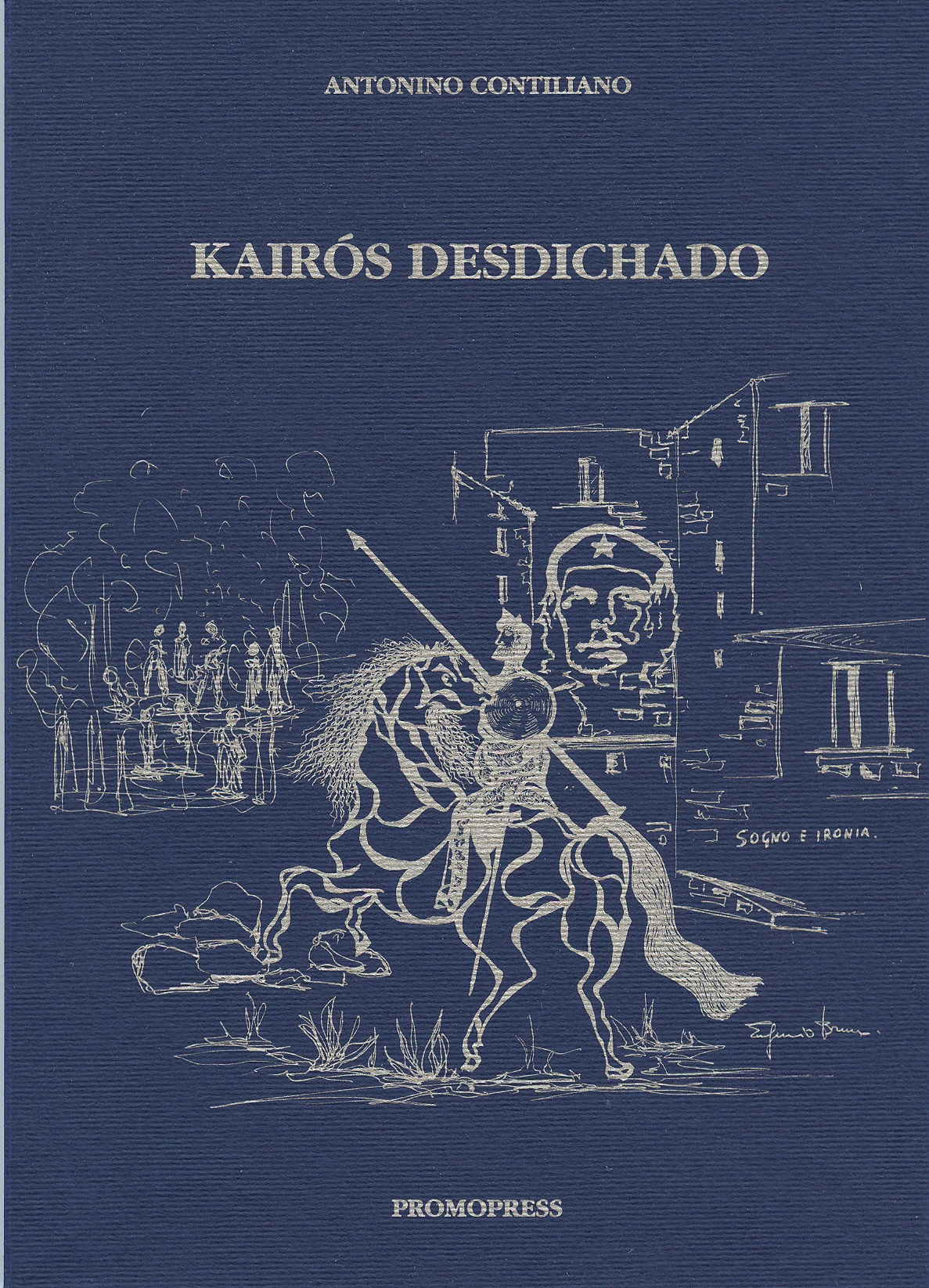
Cover by Eugenio Bruno "Sogno e
ironia"
Il Tempo del poeta
(a Edgar
Morin)
Delirio di fuoco il tempo rugiada
naviga diaspora la carne sentiero
turbolenza di nube zero l'origine
verso la zattera vortici nucleari
cascate d'alee stupore di farfalle
dentro dissolvenze fotoni rinascenti.
Risonanza magnetica nucleare il canto
erranza vibra delle cosce il desiderio
d'universi arborescenze magico boreale
quando il rogo del braciere interroga
scie del mare alone della noise Eco
la follia odi et amo dell'atomico
cuore.
L'atomo del tempo il fuso punto della
vita
allora accende il cielo e i semi terrosi
e l'ombra del volto vuoti quantici
danzano
il caosmico veliero del gabbiano della
luce
l'ambra del viaggio tra-monti giochi spirali
dove crocevia
Improbabile la rete di
Eu-ri-dice
mente qua e là le tracce della nascita divina
e della morte quale specchio d'infiniti diorama
dice l'oscuro splendore della catastrofe domani
ancora nostalgie senza memorie d'eternità immota
deriva seducente nello scirocco vago di Or-feo.
(Antonino Contiliano, Kairós Desdichado, Pomopres, Palermo, 1998, p.14)
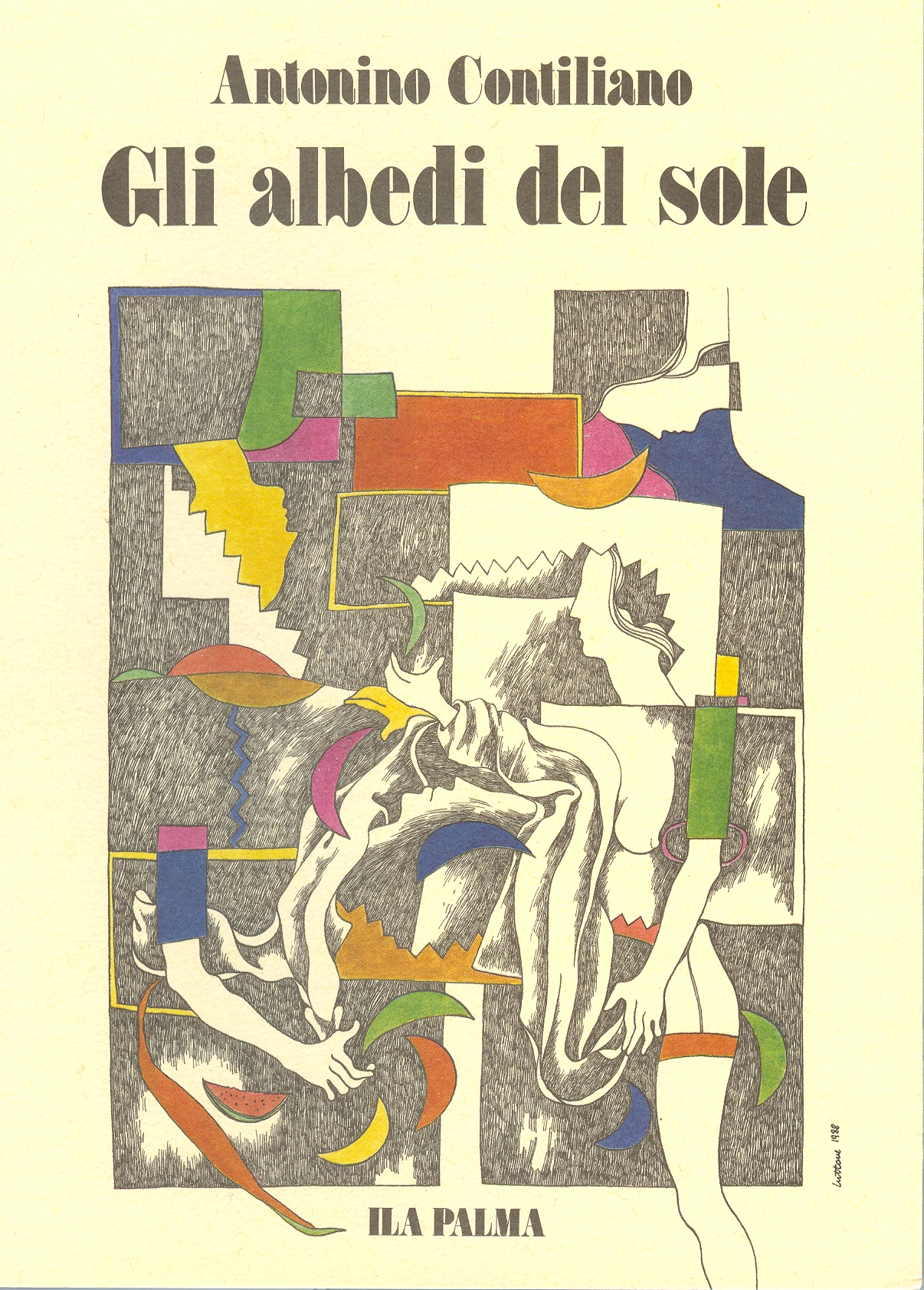
|
Cover by Jaco
Cuttone |
... The circulation prohibition, imposed to the madness and
the shadow inside the city and in the city-of-science, because they
threaten the forecast and the acknowledgment of the social identity and
characterizes them like of the uniformity of the scientific acquaintance,
is ... removed by the production of poetry and art. Here the statue of the
acquaintance, the knowledge and living the relationship
word-referentiality changes connotation; the madness freely circulates
without some interdiction and the inter-raging-action [interrogation] of
the poiesis employs at the most its potentiality the poietic praxis in the
flow of the "inter" of the poetic inter-raging-action [interrogation]
...
APARTHEID
Qui agosto non trasuda solo gelsomini
e
odore d'alghe non veste l'umidosera
se il toro ferito dall'arena urla l'aria:
dagli steccati la negritudine apartheid
scandaglia il fondo dell'isola black-out
Sud-Africa martella la sala dei passi spenti
dove nebbia brucia anatomie di segregazioni.
Altri
giorni, altri morti, lo stesso fucile
la stessa mano di sempre senza cielo d'uccelli
con il servo di dio nelle riserve coloniali
sparano agli aquiloni dei sobborghi in canto.
Vecchie
radici nutrite di vino antico
cercano
rigogli e foglie di luce e prati
a
dire finestre sull'infinito altrove sepolto
o
diroccate speranze al crocevia del dissenso.
Nel
suo letto il fiume naviga verso il mare
e
il cuore che non ama oppressione e silenzio
canta con gli alberi delle sponde spazi di festa
per
gli spirituals nati nel carcere delle piantagioni.
(Antonino Contiliano, Gli Albedi del Sole, ILAPALMA, Palermo-São Paulo, 1998, p.52)
... inter
here, in fact, is amid and duration-during, relation, function, fused and
without cuts worldliness, cumpossibilty: linearity, circularity, cyclicity,
planning. eschatology, utopy, opening-chaos, invisibile and not
rappresentabile but dicibile through
a semiotic mixage, paradox, conjecture, silence and however sense and new
trial-like referentiality not subjectable to the logical normal school of
the meant one of the bivalent truth
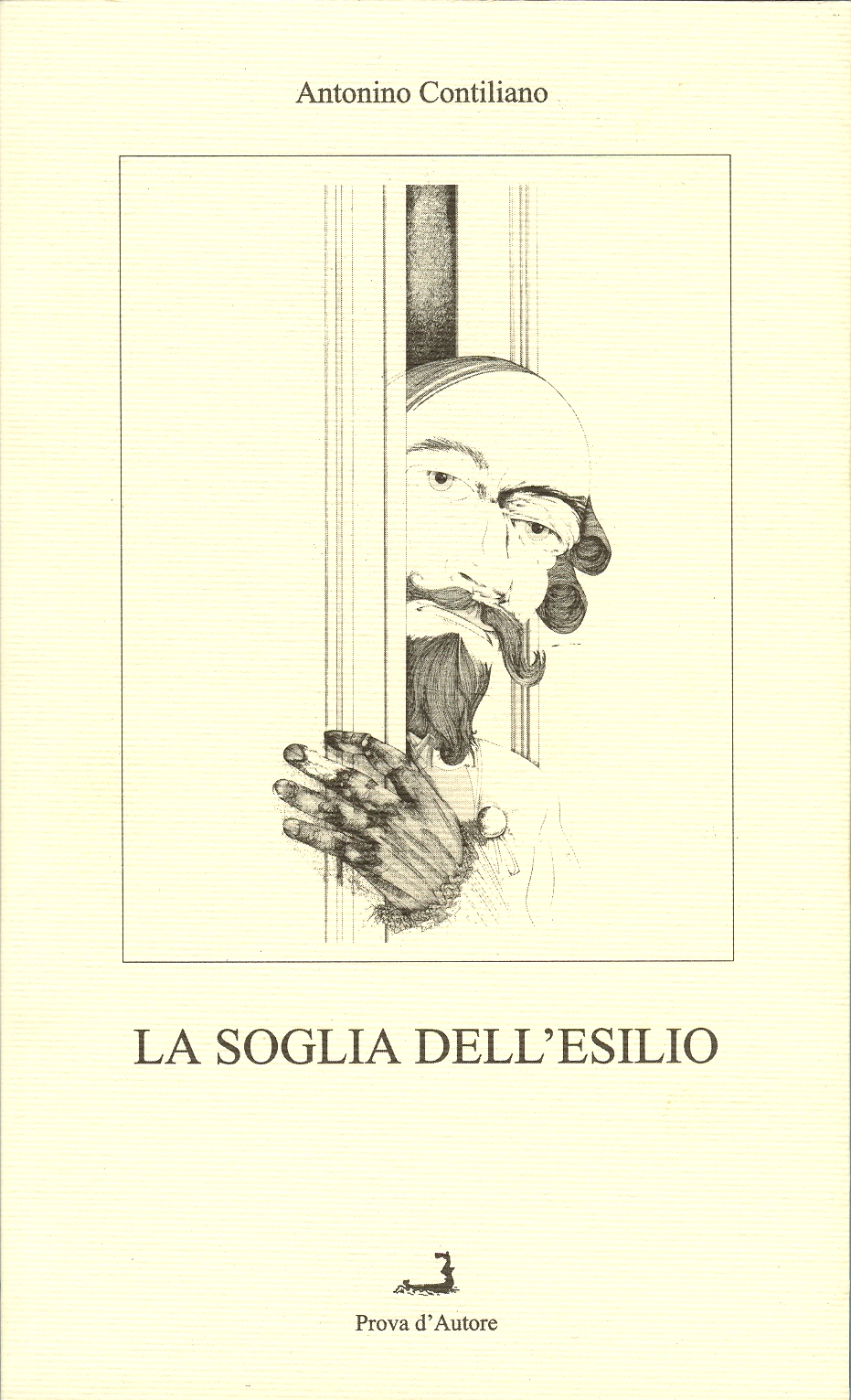
SKYLAB
questo infinito è senza
lutto
di angeli e leggerezza di soffi solari
ora che e-venti è relativo quantico
reale creato nel fotogioco virtuale
staccato dalle pareti delle parole
e nell' ascolto che tu spagini
volta rivolta di nozze emorragia
luciano skylab ovid-io nascenza
fichi stellari di ultrasuoni elettronica
tu dici perché quel
giorno delizie
con il traghetto velocità ali
spaziali
overdose di mare amare canta
le febbri il solfeggio del tempo
senza occhio al fondo del caffè
che scivola sulle memorie delle attese
e nel giardino delle caldaie stellari
flauta f1ussi di lampi navigazione
mentre i sogni tagliano il non ancora
del silenzio esploso per troppo silenzio
uraurauragano
(Antonino Contiliano, La Soglia dell'Esilio, Prova d'Autore, Catania, 2000, p.50)
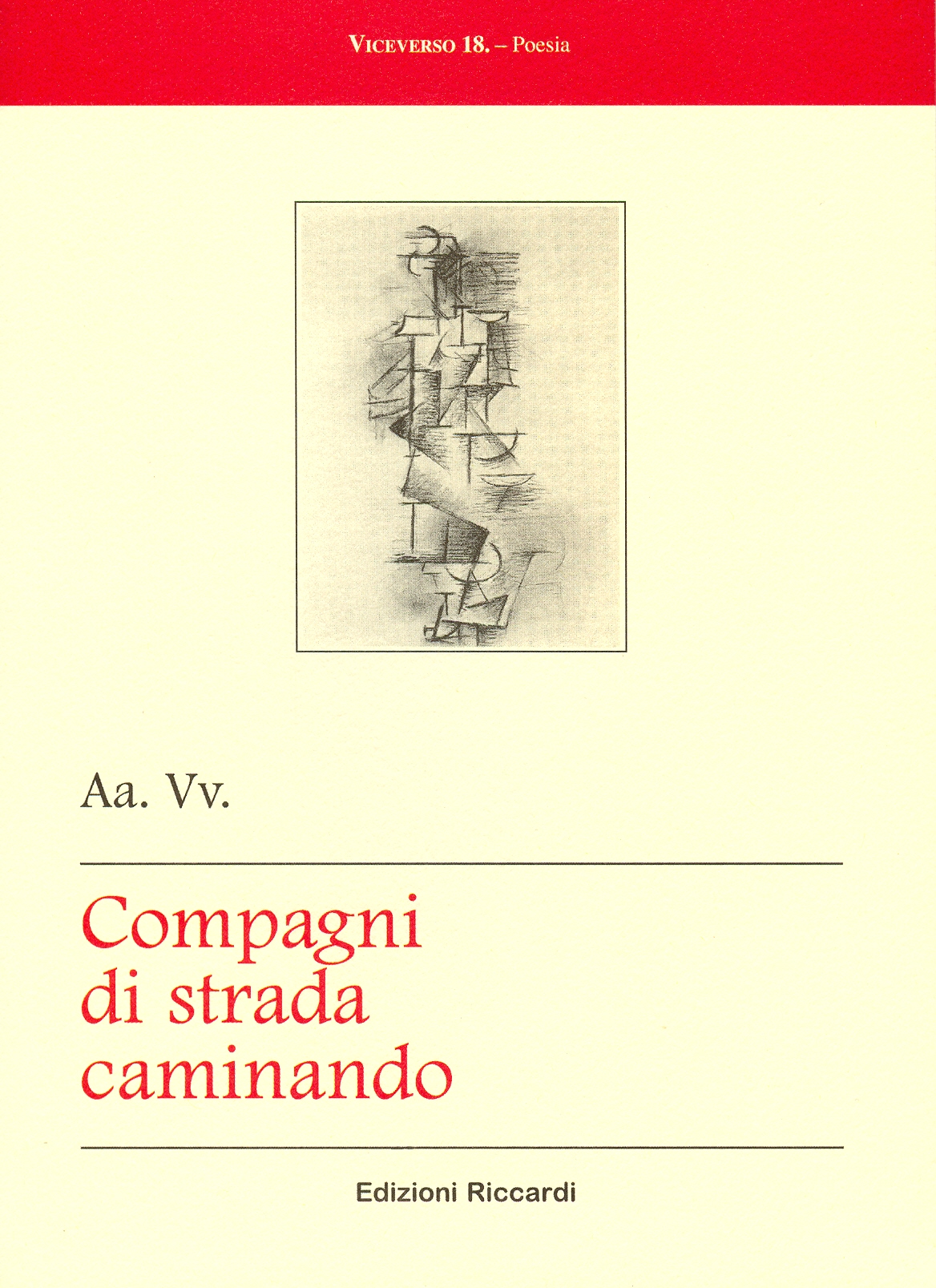
On cover: Nude by Pablo Picasso
... time
of poetry is not that of the instants, atomic unity that linearly happens
one after the other according to the aut aut of the rule of not
contradiction but that of the "very small or infinitesimal time
interval" where the duration is a during that makes topical the
cumpossibility of the ambivalence, of the polivalence and of the polisemy,
since it is worth the heuristic of the tertium datur and of the logic of
the formality
Disorder, atopy, dis-location, loss and suspension of the identity-difference of the "logos", of law and of the arrangement they irrupt in the intersubjective language of the daily and scientific tipicalness, unhinging the rational uni-versality of the classical uni-verse and with it the almost univocality of the non poetic communication ...
Perché l'urlo di dicembre schianta / querce
secolari / E
io strappo le mie foglie i
miei rami / E io pianta nuda non odo che
stormire / di
fronde / e
rumore di / vento
tra
le non-foglie i non-rami / e il freddo del tronco rotto / e
il fuoco / del
non-tempo /
non
ho tempo / non
ho più tempo // divoro
secondi secolari / io
conto i tronchi dei
nostri alberi / Spezzo tutti i rami nostri e nulla
/ Mi
consola / E
scalza sul prato
fiorito rosso sangue / Non lascio niente al caso / Non
lascio tempo / Che
non vede
germogli.
...
The
disorder, the not uniformity, the not foreseeable and irreversible
variability does non prevent neither the investigation nor the awareness
neither the knowledge, if it is true that today, for example, the geometry
of frattales and the theory of the opening-chaos can say-aleatory the
real-ale(a) in his jagged complex contingency passaging on the verge of
the potentially infinite possible
The poetry’s knowledge, as folly’s, suspends the accredited logical-linguistics naming accreditata and with it the role and the function of all the parts of the dis-course by that who dia-logues in the dis-order of the mis-coinceved without, however, annuling the same knowing. The knowledge is here, in fact, that of the as if things were and were not because a phaos-saphés (light) of light and dark, in the daytime and night, of reason and not reason, of a reason that has its own folly as a folly that has its reason that wants to make itself logos, word, unhinging the standardized intersujective communication without abolishing the same communication. And this happens in the poetry.
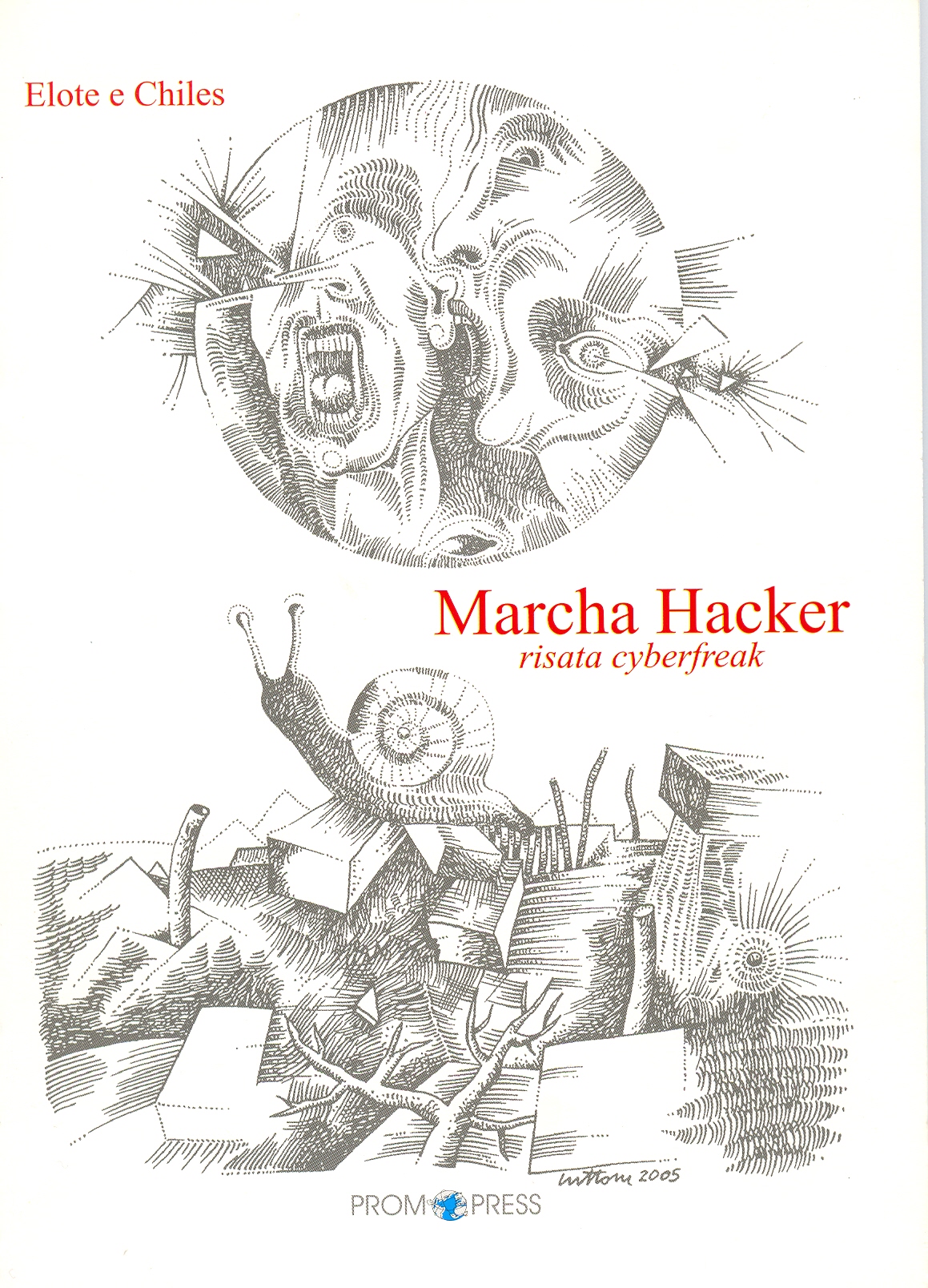
On cover: Giacomo Cuttone, Antenne Antiorario
The poiesis has in fact a praxis that, since tied up a preexisting oral network and the word of other subjects step by step emergent in the temporal flow, produces actions, relationships, unpredictable ambiguous exchanges and nevertheless legible because, open to a determined signification always inventiveness, discoverer and therefore open to a renewed polisemia able to go beyond the same oneiric likelihood of the dream. From here the folly of its contingent saying that escapes both reality and dream, both the truth and the verisimilar of science that, separating them according to the law of not contradiction, of identity, of the third excluded or of the procedures of the classical science, distinguishes in the possible one the reality and the unreal, the rational and the irrational or the not-rational»(1)
... correre di gambe su
battigia con le svento
le come se in mano biglietti da cento-
mila volassero tra vento-
sità tra schizzi spruzzi e ogni elemento
sopra corpi combusti estivo unguento
ballonzolanti euforia mento-
no fan di tutto per comunicare argento
vivo nel quotidiano accasciamento
i due individuati nell'armento
si smicciano con sottointendimento
ribadito anche dal morso lento
sull' oggetto gelato che poi un perento
rio lancio invia in parabola attento
alla mano che lo prende a stento
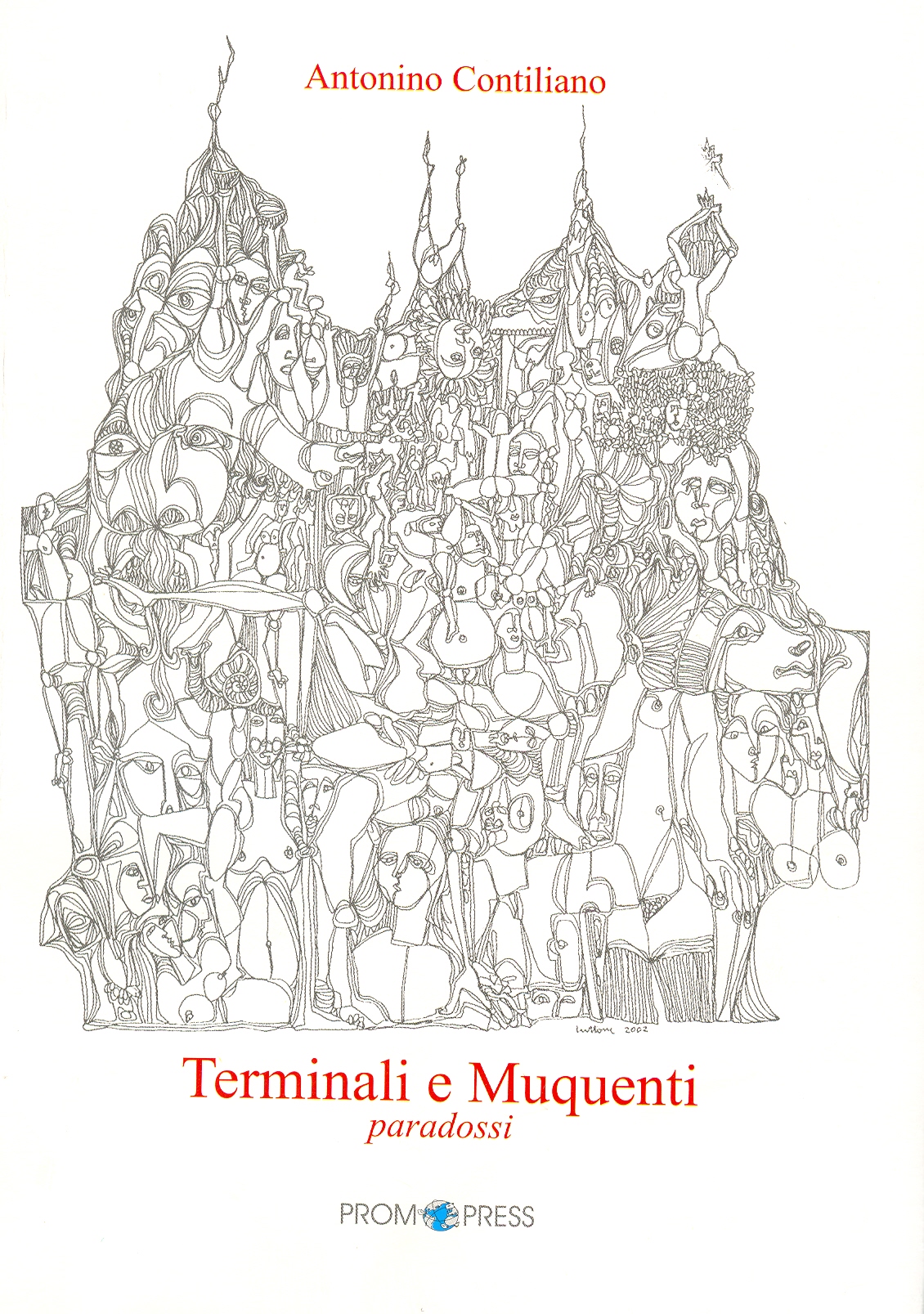
On cover: Giacomo Cuttone, Fughe in
raduno
«I would
say, only to stop a meaningful aspect, what "is changed in the way of
conjugating poetry and civil appointment" in my poetic-textual
writing it is the fact that the critical distance has become clearer and
definitive in comparison to the dogmatic models; that the engagement (appointment)
poetic, wandered off the gravitational orbit of the power party and State
systems by now emptied of the native functions, has preserved the
antagonist collective dimension making to migrate it in the assemblage of
collective "poems" – a text as an assemblage of cinema frames
or of theatrical 'scenes' and 'actions' belonging to different authors for
style and languages (intersemiosis) - sine... nomine (you see Walking
Street Companions, Ricciardi, Naples 2001; Marcha hacker,
Promopress, Palermo 2005).
The civil and political aspect is there where, using instrumentation of various 'rhetorical-poetic' diversification, the language of the basic (literal-material) communication is submitted to torsions and distorsions of various nature and kind to produce desecration, irony, parody, sarcasm, 'materialist' allegory and involvement of the hypothetical consumer/reader that wrestles with the text. And this because they are not meant to transmit but to build together delving into the 'orientations' of sense, and alternative to the system: the poet is not an anymore "official", but a critic and as such he opts, starting from the practice of the polysemic signification poetic, for "a non representative and not-power democracy, and for a 'moltidude' of social singleness in horizontal walk as expressed by the no-global movements. This change tendential and tendentious e has made me meet and approach various poets and poetics ...»(2)
|
|
parole orchidee in r-onda
urticaria
socchiuse fra bordelli e canzoni
soglie inzuppate di scavi allucinati
ora della fame a spasso sulle rughe
la via crucis di chi non ha pasque
inzacchera di vento l'uomo
più triste
che torna a letto con la linea dell'ombra
rimasta appesa ai fianchi dell'orizzonte
deragliando, e l'ultravioletto
smitraglia
verso le gole dei tuoi sogni sboccati
ogni sera non dare alle
palpebre
se non ha imbucato poesie di dissolvenza
per il mondo impoverito delle vendite
incasinato di consulti a perdere e vuoti
e scala i fondali delle
galassie i respiri
un maglione per non disperdere tuo il calore
scrivo
prigioni questi cieli galleggianti
e non dimentico i fiori dei cannoni ieri
che non è magica ancora la
mutazione
del bruco che cambia la pelle con la stagione
e nato dalla cenere delle stelle ione
nessuno può uccidermi la vita in vena
|
Alchimia dei modelli ribelle
l'alchimia odore di dune il tempo
della bocca |
